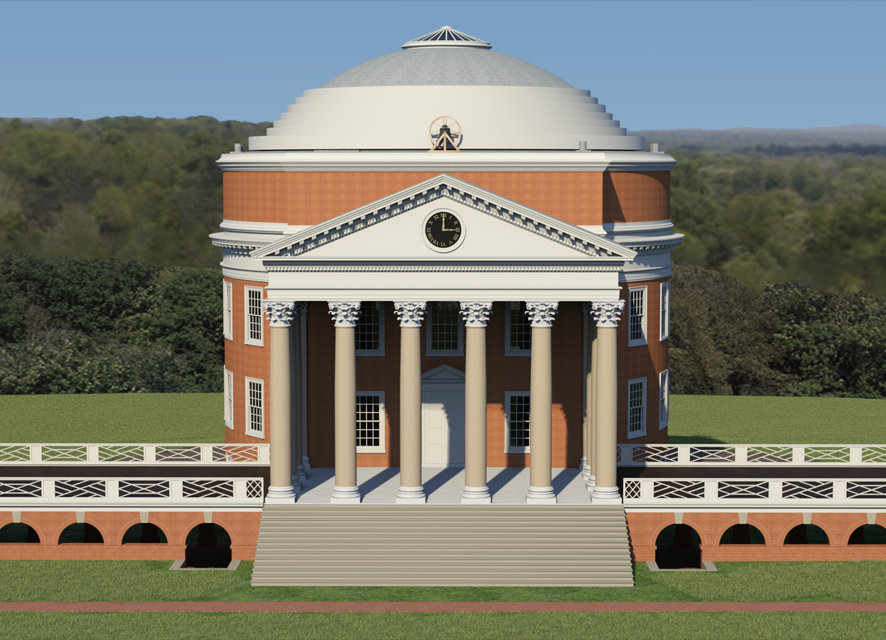The Rotunda and the Pantheon


Thomas Jefferson’s Rotunda at the University of Virginia is one of his most recognizable works as an architect, and has served as an architectural model in its own right since its completion in 1828. However, it was Benjamin Henry Latrobe who first suggested building a central, Pantheon-like building as the focus of the Academical Village, and sent Jefferson a sketch of such a structure in July of 1817. A large domed library at the head of the Lawn would distinguish it from the smaller pavilions to the east and west, creating a clear hierarchy of architectural styles and building function. Jefferson began developing the design for the Rotunda in 1818 and refined it over several years, with construction beginning in 1823.
The inspiration from the Roman Pantheon is clear both visually and documented in writing, and many details are explicitly copied from Palladio’s plates detailing the design of the Pantheon. The diameter of the Rotunda is 77 feet, half that of the Pantheon. In both plan and section, the Rotunda and Pantheon are based on the proportions of a circle inscribed in a square. In an 1821 letter to Thomas Appleton, U.S. consul in Italy, Jefferson asked him to price the carving of ten Corinthian capitals and eight half capitals, to be copied exactly from the Pantheon as depicted by Palladio in Plate LX of Quattro Libri dell'Architettura. This plate also provided the rosette design for the cornice that Jefferson wanted sculptor William Coffee to use. Even before the Rotunda was completed in 1828, visitors to the developing University marveled at its design.


